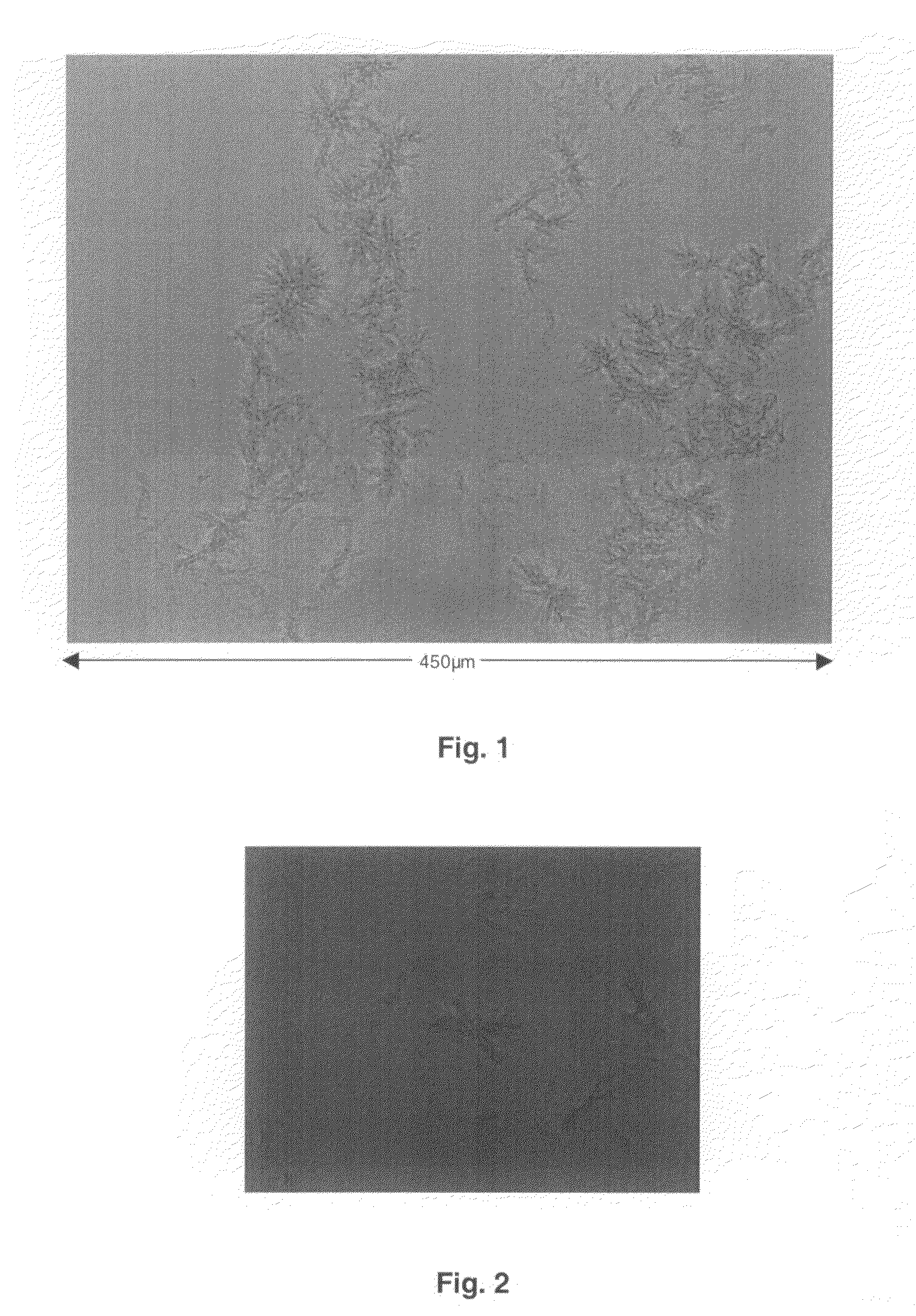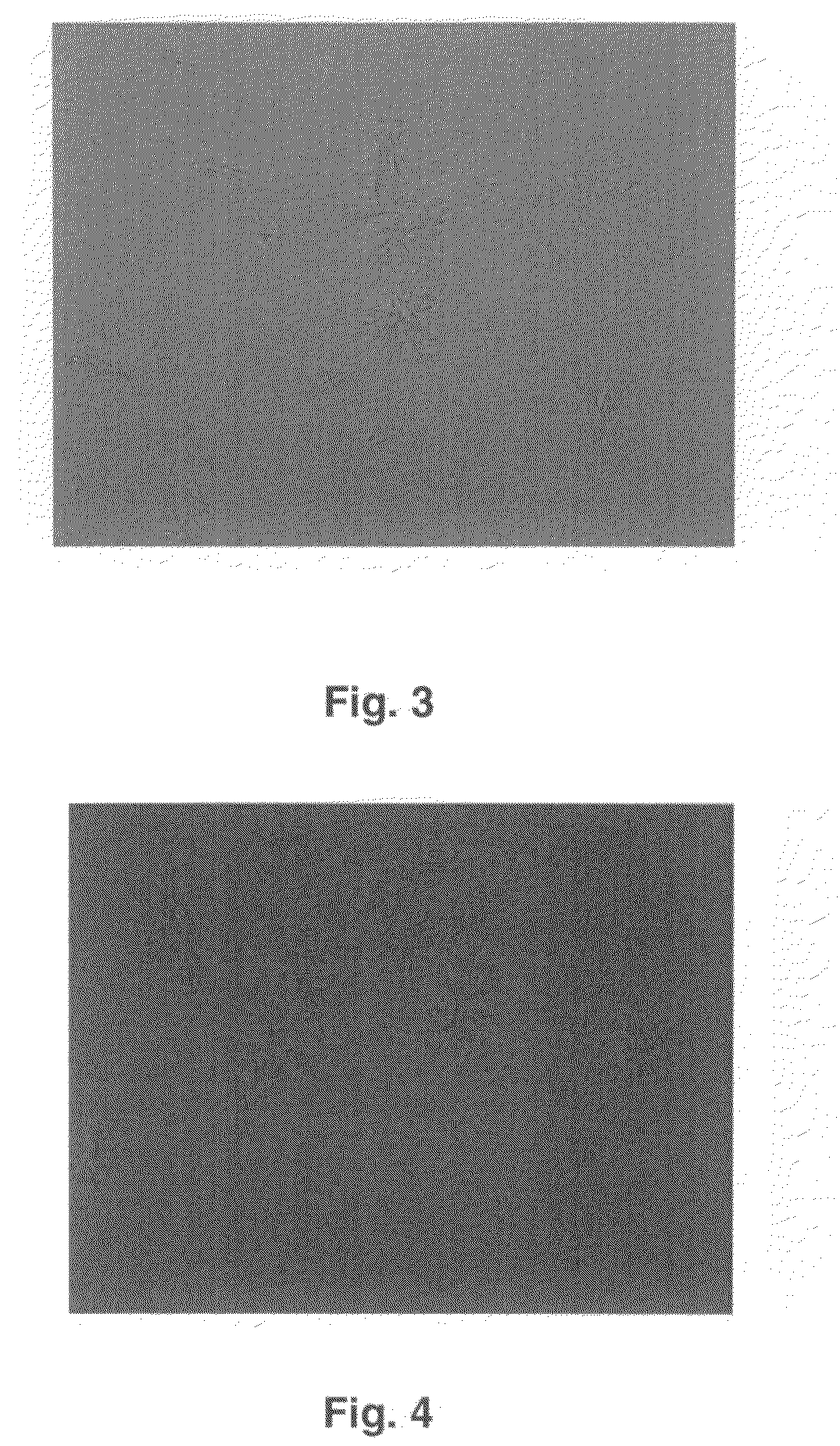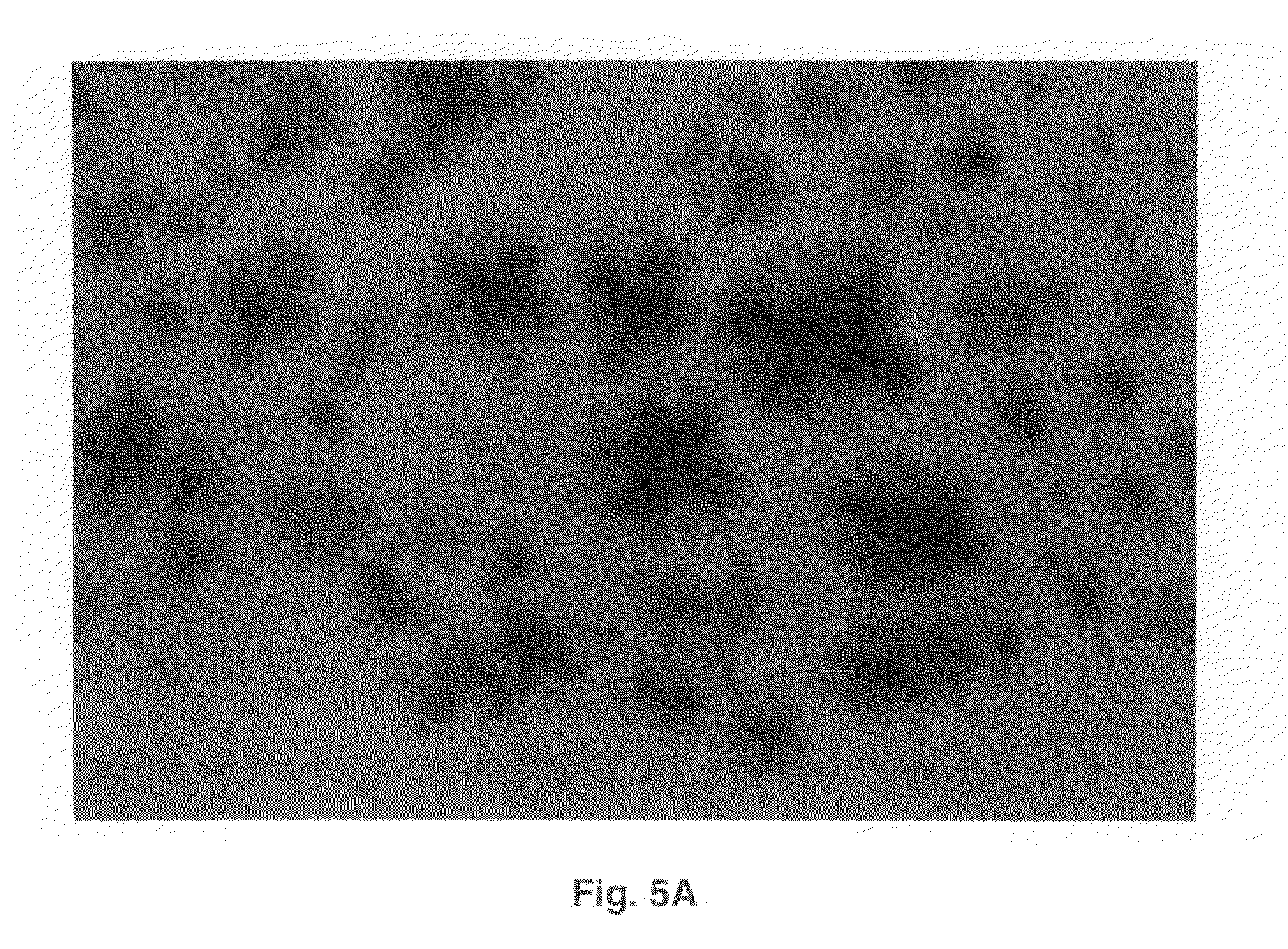Crystalline anti-hTNFalpha antibodies
- Summary
- Abstract
- Description
- Claims
- Application Information
AI Technical Summary
Benefits of technology
Problems solved by technology
Method used
Image
Examples
example 1
PEG 4,000 / Sodium Acetate Grid Screen in Hanging Drop Vapor Diffusion Mode
[0197]D2E7 was buffered into a buffer containing around 0.1 M sodium acetate at a pH of around 5.2. The protein concentration was adjusted to 10 mg / mL.
[0198]A greased VDX plate and square OptiClear plastic cover slides were used. 500 μL of a particular reservoir solution was prepared by admixing acetate buffer, 50% w / v PEG 4,000 solution and Milli Q water (fully desalted and optionally pre-destilled) in each well. In this example, the acetate buffer molarity was kept constant at around 0.1 M, and PEG 4,000 was varied from around 6% w / v to around 28% w / v in 2% steps. The pH was around 5.2 throughout. Each condition was assessed in duplicate. Around 1 μL of protein solution was admixed with around 1 μL of a particular reservoir solution on a square OptiClear plastic cover slide, and the well was sealed with the inverted slide, generating a hanging drop experiment. The plates were stored at ambient temperature. Mi...
example 2
PEG 4,000 / Sodium Acetate Grid Screen in Hanging Drop Vapor Diffusion Mode, Different Protein Concentration
[0200]D2E7 was buffered into a buffer containing around 0.1 M sodium acetate at a pH of around 5.2. The protein concentration was adjusted to 50 mg / mL. Except for the protein concentration the process conditions were identical with those of Example 1.
[0201]RESULTS: From the 24 wells assessed, no crystals were observed.
example 3
PEG 400 / Sodium Acetate Grid Screen in Hanging Drop Vapor Diffusion Mode
[0202]D2E7 was buffered into a buffer containing around 0.1 M sodium acetate at a pH of around 5.2. The protein concentration was adjusted to 10 mg / mL.
[0203]A greased VDX plate and square OptiClear plastic cover slides were used. 500 μL of a particular reservoir solution was prepared by admixing acetate buffer, 50% w / v PEG 400 solution and Milli Q water in each well. In this example, the acetate buffer molarity was kept constant at around 0.1 M, and PEG 400 was varied from around 30% w / v to around 40% w / v in 2% steps. The pH was around 5.2 throughout. Each condition was assessed in duplicate. Around 1 μL of protein solution was admixed with around 1 μL of a particular reservoir solution on a square OptiClear plastic cover slide, and the well was sealed with the inverted slide, generating a hanging drop experiment. The plates were stored at ambient temperature. Microscopy of the drops was performed multiple times ...
PUM
| Property | Measurement | Unit |
|---|---|---|
| Temperature | aaaaa | aaaaa |
| Temperature | aaaaa | aaaaa |
| Time | aaaaa | aaaaa |
Abstract
Description
Claims
Application Information
 Login to View More
Login to View More - R&D
- Intellectual Property
- Life Sciences
- Materials
- Tech Scout
- Unparalleled Data Quality
- Higher Quality Content
- 60% Fewer Hallucinations
Browse by: Latest US Patents, China's latest patents, Technical Efficacy Thesaurus, Application Domain, Technology Topic, Popular Technical Reports.
© 2025 PatSnap. All rights reserved.Legal|Privacy policy|Modern Slavery Act Transparency Statement|Sitemap|About US| Contact US: help@patsnap.com



